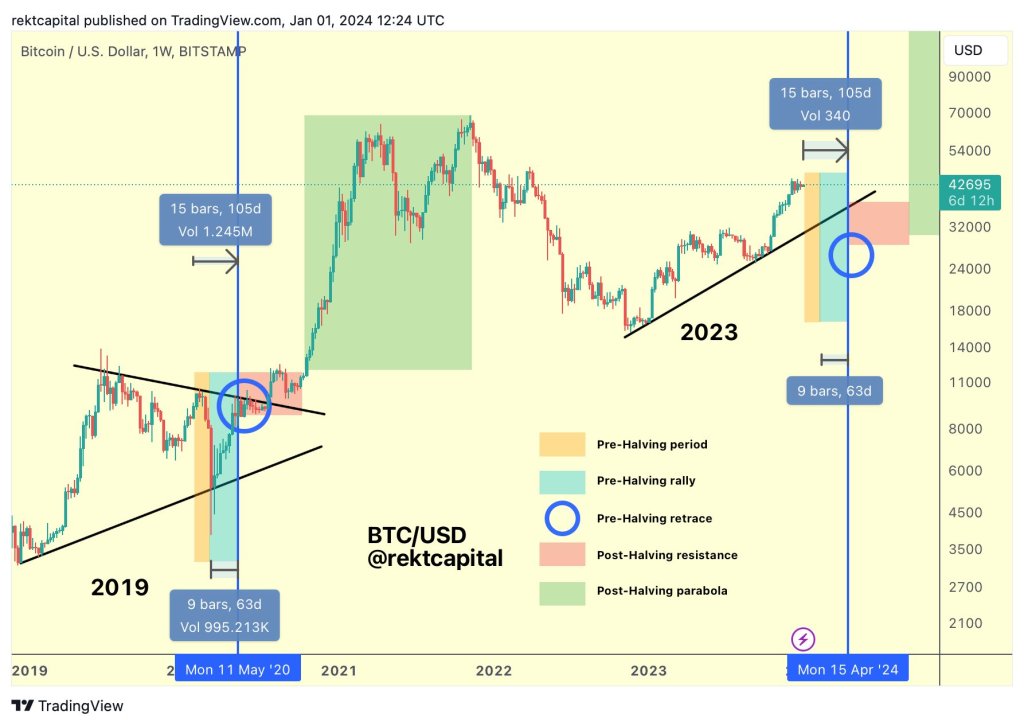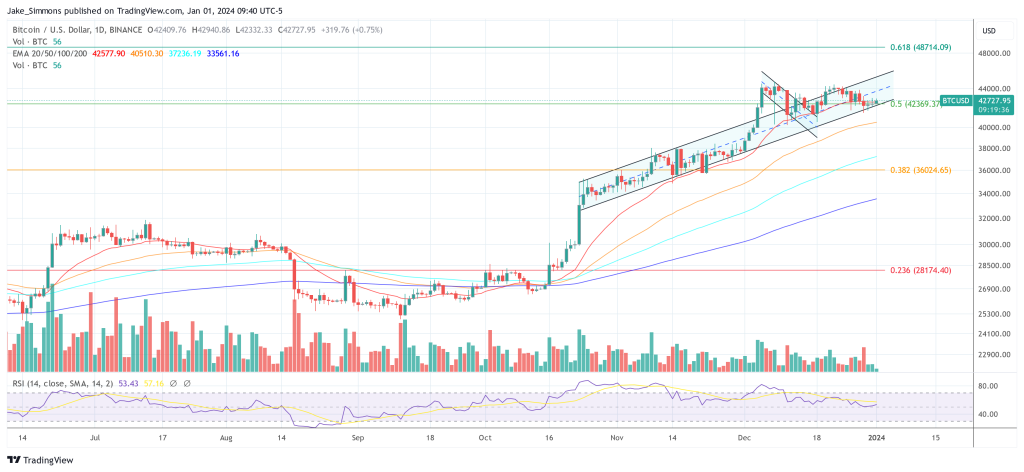While the investor community currently only has its eyes on the imminent approval of a spot Bitcoin ETF in the United States by the Securities and Exchange Commission (SEC), another massively bullish event is currently fading into the background: the Bitcoin halving. In just 111 days, on April 22, 2024, the next BTC Halving will take place and reduce the quantity of BTC emitted from 6.25 to 3.125.
Renowned crypto analyst Rekt Capital has shed light on the potential market dynamics leading up to and following this pivotal event. According to him, the journey towards the halving unfolds in five distinct phases, each with its implications for investors and the market at large.
Next Bitcoin Halving: Following Historical Patterns?
In the current phase, known as the pre-halving period, we are witnessing a market scenario where any significant price retractions could spell substantial returns post-halving. Rekt Capital explains, “Historically, any deeper retraces that occur during this period tend to generate fantastic Return On Investment for investors in the several months after the Halving.”
As BTC moves closer to the halving, the next phase, a pre-halving rally, typically takes shape about 60 days before the event. This period is marked by a ‘buy the hype, sell the news’ approach among traders. Speculators and short-term traders buy in anticipation of a hype-driven rally and sell their holdings just before the halving, culminating in a pre-halving retrace.
Next, the pre-halving retrace occurs around the time of the halving itself. This phase has historically seen significant price drops; in 2016, the retrace was -38% deep, and in 2020, it was -20% deep. “This Pre-Halving retrace can last multiple weeks, making investors question whether the Halving was a bullish catalyst on price after all,” notes Rekt Capital.

Following the retrace, the market typically enters a phase of re-accumulation. This stage is often riddled with investor challenges, including boredom, impatience, and disappointment, especially if immediate significant returns on Bitcoin investments do not materialize.
The final phase in this cycle is a breakout into a parabolic uptrend, where Bitcoin usually experiences accelerated growth, often reaching new all-time highs. “Once Bitcoin breaks out from the re-accumulation area breakout into the parabolic uptrend, it is during this phase Bitcoin experiences accelerated growth on its way to new All Time Highs,” asserts Rekt Capital.
Imminent Spot ETF: A Pattern Breaker?
With the imminent approval of a Bitcoin ETF in the coming days, it remains to be seen whether this year’s halving will show a different pattern than before. The spot ETF approval has the potential to disrupt the historical patterns.
Gabor Gurbacs, advisor to Tether and VanEck recently stated: “In my view, people tend to overestimate the initial impact of US Bitcoin ETFs. I think maybe a few $100mm flows (mostly recycled) money. Long term, people tend to underestimate the impact of spot Bitcoin ETFs. If history is any guide, gold is worth studying as a parallel.” Notably, gold went on to an 8 year 5x rally with no single down year between 2005 – 2012 following the ETF approval.
At press time, BTC traded at $42,727.







